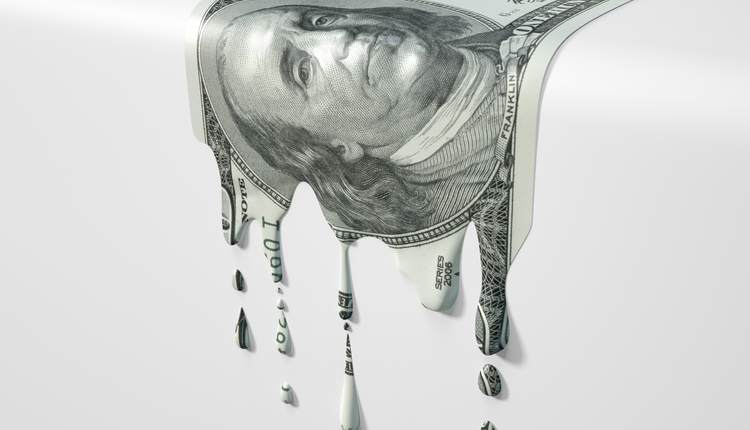Benjamin Franklin once said: “The only things certain in life are death and taxes.”
It’s safe to say that Ben didn’t ship small parcels. If he did, surely he would have added FedEx and UPS annual rate increases to his short list of life’s inevitable occurrences.
As is customary, both major parcel carriers will increase the price for their services as we enter a new calendar year.
How much those prices will rise, however, is far less certain, and heavily dependent upon a parcel shipper’s unique package characteristics.
Each carrier announced an average increase of 4.9 percent on ground services, derived from a 5.9 percent base increase, minus a one-percentage-point reduction in fuel surcharge. UPS air services will spike a net average of 4.5 percent and FedEx Express will jump a net average of 3.9 percent.
But, find a gambler who bets based upon the law of averages and chances are he won’t be at the table long.
The truth of the matter is that an individual shipper’s ground rates could go up as much as 8.9 percent. Shipments weighing less than 35 pounds will receive an average increase of 6.8 percent, not 5.9.
So just how many 73-pound ground shipments does your company move from Chicago to Wounded Knee, South Dakota (1.7 percent increase)?
Air services offer little relief.
A UPS air shipper could see rates for Next Day Air go up as much as 7.6 percent, Next Day Saver go up as much as 8.2 percent, 2 Day Air go up as much as 8.8 percent and 3 Day Select soar as much as 9.9 percent.
FedEx shippers could also take a hit – to the tune of as much as 6.5 percent for Priority Overnight, 7 percent for Standard Overnight, 7.5 percent for 2 Day Air and, brace yourself, 10.3 percent on Express Saver.
And we haven’t even gotten to the accessorials yet!
Address corrections are up 9.1 percent, residential surcharge is up 6.7 percent, declared value is up 6.3 percent, commercial delivery area surcharge (DAS) is up 7.5 percent, residential DAS is up 8.3 percent, extended DAS is up 7.7 percent, indirect signature is up 12.5 percent and the charge for a missing or incorrect account number is up 10 percent.
Need an ibuprofen? Then watch out for the zone 2, 1 pound minimum…
The composition of these increases is no accident, it’s an algorithm. With the economy struggling to recover, these bellwethers are looking for ways to remain profitable, too. And they’re doing it by raising rates on more profitable services – the same services that companies are looking to “trade down” to as a means of saving money themselves.
It’s a cutthroat technique that keeps the profits pouring in.
Examine the numbers needed to arrive at the advertised averages and it’s easy to understand why each carrier employs strong-arm tactics such as forbidding the use of third-party intermediaries in the negotiation process.
The explanation is rather, well, certain.
It’s all about the Benjamins.
It’s safe to say that Ben didn’t ship small parcels. If he did, surely he would have added FedEx and UPS annual rate increases to his short list of life’s inevitable occurrences.
As is customary, both major parcel carriers will increase the price for their services as we enter a new calendar year.
How much those prices will rise, however, is far less certain, and heavily dependent upon a parcel shipper’s unique package characteristics.
Each carrier announced an average increase of 4.9 percent on ground services, derived from a 5.9 percent base increase, minus a one-percentage-point reduction in fuel surcharge. UPS air services will spike a net average of 4.5 percent and FedEx Express will jump a net average of 3.9 percent.
But, find a gambler who bets based upon the law of averages and chances are he won’t be at the table long.
The truth of the matter is that an individual shipper’s ground rates could go up as much as 8.9 percent. Shipments weighing less than 35 pounds will receive an average increase of 6.8 percent, not 5.9.
So just how many 73-pound ground shipments does your company move from Chicago to Wounded Knee, South Dakota (1.7 percent increase)?
Air services offer little relief.
A UPS air shipper could see rates for Next Day Air go up as much as 7.6 percent, Next Day Saver go up as much as 8.2 percent, 2 Day Air go up as much as 8.8 percent and 3 Day Select soar as much as 9.9 percent.
FedEx shippers could also take a hit – to the tune of as much as 6.5 percent for Priority Overnight, 7 percent for Standard Overnight, 7.5 percent for 2 Day Air and, brace yourself, 10.3 percent on Express Saver.
And we haven’t even gotten to the accessorials yet!
Address corrections are up 9.1 percent, residential surcharge is up 6.7 percent, declared value is up 6.3 percent, commercial delivery area surcharge (DAS) is up 7.5 percent, residential DAS is up 8.3 percent, extended DAS is up 7.7 percent, indirect signature is up 12.5 percent and the charge for a missing or incorrect account number is up 10 percent.
Need an ibuprofen? Then watch out for the zone 2, 1 pound minimum…
The composition of these increases is no accident, it’s an algorithm. With the economy struggling to recover, these bellwethers are looking for ways to remain profitable, too. And they’re doing it by raising rates on more profitable services – the same services that companies are looking to “trade down” to as a means of saving money themselves.
It’s a cutthroat technique that keeps the profits pouring in.
Examine the numbers needed to arrive at the advertised averages and it’s easy to understand why each carrier employs strong-arm tactics such as forbidding the use of third-party intermediaries in the negotiation process.
The explanation is rather, well, certain.
It’s all about the Benjamins.
Brandon Staton is National Account Manager, Transportation Impact






![GettyImages-914834678-[Converted]](https://cms-static.wehaacdn.com/parcelindustry-com/images/GettyImages-914834678--Converted-.1133.widea.0.jpg)




